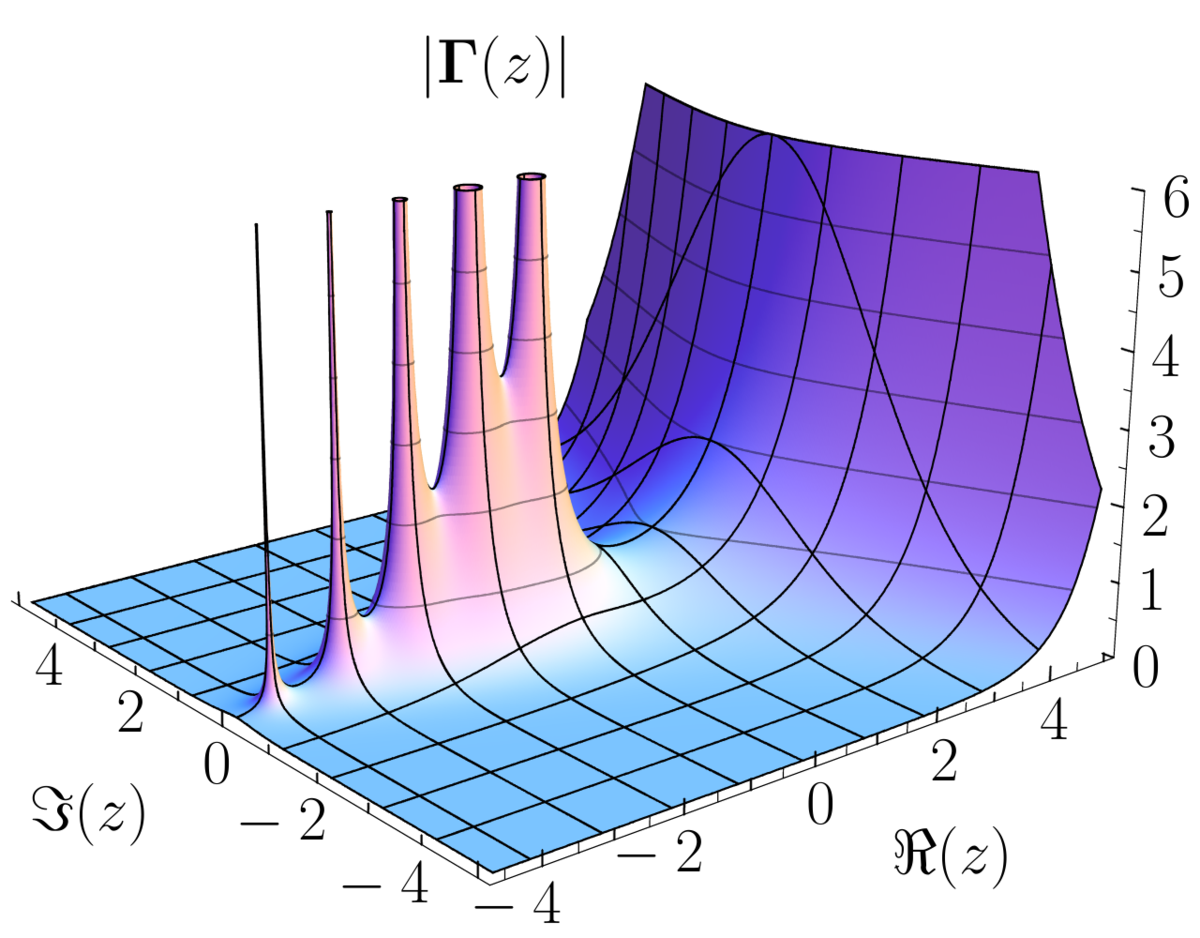Here is a persuasive advertisement for ghostwriting services for the topic of Cauchy-Riemann equations and differentiability:
**Unlock the Secrets of Complex Analysis with Our Expert Ghostwriting Services**
Are you struggling to navigate the intricate relationship between the Cauchy-Riemann equations and differentiability? Do you need help unraveling the converse of Theorem 121 and its implications for functions of complex variables?
Our team of expert ghostwriters is here to help. With a deep understanding of complex analysis and a proven track record of delivering high-quality academic content, we can help you produce a top-notch paper that exceeds your expectations.
**Our Services:**
* Customized research papers on the Cauchy-Riemann equations and differentiability
* Expert analysis of the converse of Theorem 121 and its implications
* Well-structured and clearly written essays that demonstrate a deep understanding of complex variables
* Fast turnaround times without compromising on quality
**Why Choose Us:**
* Our team of experts has a strong background in mathematics and complex analysis
* We guarantee 100% original and plagiarism-free content
* Our writers are experienced in producing academic content that meets the highest standards
* We offer flexible pricing and discounts for bulk orders
**Get Ahead in Your Academic Pursuits with Our Ghostwriting Services**
Don’t let complex analysis hold you back. With our expert ghostwriting services, you can focus on other important aspects of your academic journey while we take care of your paper. Contact us today to learn more about how we can help you achieve academic success.
Order now and get a 10% discount on your first paper!
In view of \(u_{x}=1\neq v_{y}=4\) the equations given in Theorem 121 cannot be simultaneously satisfied at any point \(z\). Therefore \(f\) is nowhere differentiable.
It turns out that the Cauchy-Riemann equations plus the extra assumption of continuity of the partial derivatives imply the converse of Theorem 121.
**Theorem 122**.: _Let \(z=x+iy\in G\), where \(G\in\mathbb{C}\) is an open set, and let \(f(z)=u(x,y)+iv(x,y)\). Assume \(u(x,y)\) and \(v(x,y)\) have continuous first-order partial derivatives in \(G\) and they satisfy the Cauchy-Riemann equations at \(z\). Then \(f^{\prime}(z)\) exists._
The proof is technical, so we only state the result and refer the reader to [41], p. 59.
**Remark 68**.: Complex multiplication can be interpreted as a linear map from \(\mathbb{R}^{2}\) to \(\mathbb{R}^{2}\) and thus as a \(2\times 2\) matrix as follows. Fix \(w=a+ib\) a complex number, then for any other complex number \(z=x+iy\), we have by complex multiplication:
\[wz=(a+ib)(x+iy)=(ax-by)+i(ay+bx).\]
Now, representing \(z=\begin{bmatrix}x\\ y\end{bmatrix}\in\mathbb{R}^{2}\) as a vector, we get
\[\begin{bmatrix}a&-b\\ b&a\end{bmatrix}\begin{bmatrix}x\\ y\end{bmatrix}=\begin{bmatrix}ax-by\\ bx+ay\end{bmatrix}.\]
Clearly, the matrix \(\begin{bmatrix}a_{11}&a_{12}\\ a_{21}&a_{22}\end{bmatrix}\) represents multiplication by a complex number \(a+bi\) if and only if \(a_{11}=a_{22}=a\) and \(a_{21}=-a_{12}=-b\).
Now, associate to each complex function \(f(z)=u(x,y)+iv(x,y)\) the mapping \(f(x,y)=(u(x,y),v(x,y))\) from \(\mathbb{R}^{2}\) to \(\mathbb{R}^{2}\). We know if \(f\) is differentiable, the partials of \(u\) and \(v\) exist, and the Jacobian matrix of \(f\) at some point \(z_{0}=(x_{0},y_{0})\) denoted by \(J(x_{0},y_{0})\) is given as
\[J(x_{0},y_{0})=\begin{bmatrix}u_{x}(x_{0},y_{0})&u_{y}(x_{0},y_{0})\\ v_{x}(x_{0},y_{0})&v_{y}(x_{0},y_{0})\end{bmatrix}.\]
If the Cauchy-Riemann equations are satisfied, in others words when \(u_{x}=v_{y}\) and \(v_{x}=-u_{y}\), we see that the Jacobian represents multiplication by a complex number. It is also not difficult to see the determinant of the Jacobian:
\[\det J(x_{0},y_{0}) =u_{x}v_{y}-v_{x}u_{y}\] \[=u_{x}^{2}+v_{y}^{2}\] \[=|f^{\prime}(z_{0})|^{2}.\]
### Elementary Properties of Holomorphic Functions
Let \(G\) be a fixed open set, then
1) If \(f,g\in H(G)\) and \(\alpha\in\mathbb{C}\) then
\[\alpha f,\,f+g,\,\text{and}\,\,fg\,\,\text{(all defined pointwise)}\]are holomorphic in \(G\). Moreover,
\[(\alpha f)^{\prime}(z)=\alpha f^{\prime}(z)\] \[(f+g)^{\prime}(z)=f^{\prime}(z)+g^{\prime}(z)\] \[(fg)^{\prime}(z)=f^{\prime}(z)g(z)+g^{\prime}(z)f(z).\]
The usual rules hold.
2) If \(f\) is holomorphic in \(G\) and \(g\) is holomorphic in \(U\) where \(U\) is an open set containing \(f(G)\), then the composite function \(g\circ f\) is defined as
\[(g\circ f)(z)=g(f(z))\ \forall z\in G\ \text{and}\] \[(g\circ f)^{\prime}(z)=g^{\prime}(f(z))f^{\prime}(z).\]
3) If \(f\) is holomorphic in \(G\) when \(f(z)\neq 0\) for all \(z\in G\), then \(1/f(z)\) is holomorphic in \(G\) and
\[\left(\frac{1}{f}\right)^{\prime}(z)=\frac{-f^{\prime}(z)}{(f(z))^{2}}.\]
The elementary properties listed above produce some preliminary holomorphic functions. In fact \(f(z)=z\) and \(f(z)=c\) (constant function) are certainly differentiable everywhere, thus any polynomial
\[p(z)=\sum_{n=0}^{N}c_{n}z^{n},\]
where \(c_{n}\in\mathbb{C}\), is holomorphic in \(\mathbb{C}\). A rational function \(\frac{p(z)}{q(z)}\) where \(p(z)\) and \(q(z)\) are polynomials and \(q(z)\neq 0\) is holomorphic. For example \(\frac{z}{1+z^{2}}\) is holomorphic at every point except \(i\) and \(-i\).
4) Holomorphy implies continuity. This follows from the fact that if \(f^{\prime}(z)\) exists then \(\lim_{z\to z_{0}}f(z)=f(z_{0})\quad\text{because}\)
\[\lim_{z\to z_{0}}\left[\frac{f(z)-f(z_{0})}{z-z_{0}}\cdot(z-z_{0})\right]=f^{ \prime}(z_{0})\cdot 0=0.\]
### 3.2.1 Constancy in a Region
The Cauchy-Riemann equations have the following theoretical consequence.
Proof
: To prove a) let \(f(z)=u(x,y)+iv(x,y)\) and let \(z=x+iy\) in \(D(0;R)\). Then from the proof of the Cauchy-Riemann equations we know
\[f^{\prime}(z)=u_{x}+iv_{x}=-iu_{y}+v_{y}=0,\]
which implies \(u_{x}=v_{x}=u_{y}=v_{y}=0\). Now fix \(z_{1}=x_{1}+iy_{1}\) and \(z_{2}=x_{2}+iy_{2}\) in \(D(0;R)\), we want to show \(f(z_{1})=f(z_{2})\) (Figure 3.14).
At least one of \(z_{3}=x_{2}+iy_{1}\) or \(z_{4}=x_{1}+iy_{2}\) lies in \(D(0;R)\); without loss of generality suppose \(z_{3}\) does. Then, each real-valued function \(\phi:x\mapsto u(x,y_{1})\) has derivative \(\phi^{\prime}(x)=u_{x}=0\). Thus \(\phi\) is constant, i.e., \(u(x_{1},y_{1})=u(x_{2},y_{1})\). Similarly one can show \(u(x_{2},y_{1})=u(x_{2},y_{2})\). Since \(u\) and \(v\) are both constant on any horizontal and vertical line segments in \(D(0;R)\) we obtain \(f(z_{1})=f(z_{2})=f(z_{3})\).
To prove b), let \(|f(z)|=u^{2}+v^{2}=c^{2}\). Taking partials with respect to \(x\) will give
\[uu_{x}+vv_{x}=0.\]
Now apply the Cauchy-Riemann equations to obtain
\[uu_{y}-vv_{y}=0.\]
Similarly, taking partials with respect to \(y\) and applying the Cauchy-Riemann equations will yield
\[uu_{y}+vu_{x}=0.\]
Elimination of \(u_{y}\) yields \((u^{2}+v^{2})u_{x}=0\) which implies \(u_{x}=0\). Similarly, all the other partials are equal to zero.
Figure 3.14: Constancy in a region
The proof of c) is similar. If \(f\) is real valued, then \(v=0\), so that \(v_{x}=v_{y}=0\). By the Cauchy-Riemann equations, \(u_{x}=u_{y}=0\) too. Hence \(f\) must be constant.
### Exercises
1. Verify the Cauchy-Riemann equations for the function
\[f(z)=z^{2}+3z+2.\]
2. Suppose that \(f\) is a holomorphic function on the disc \(D=\{z:|z|<1\}\) and that \(\operatorname{Re}f(z)=3\) for all \(z\in D\). Show that \(f\) is a constant on \(D\).
3. Suppose that \(f\) is holomorphic on \(G=\{z:\operatorname{Re}z>1\}\) and that
\[\frac{\partial u}{\partial x}+\frac{\partial v}{\partial y}=0\]
on \(G\). Show that there is a real constant \(\alpha\) and a complex constant \(\beta\) such that \(f(z)=-i\alpha z+\beta\) on \(G\).

发表回复